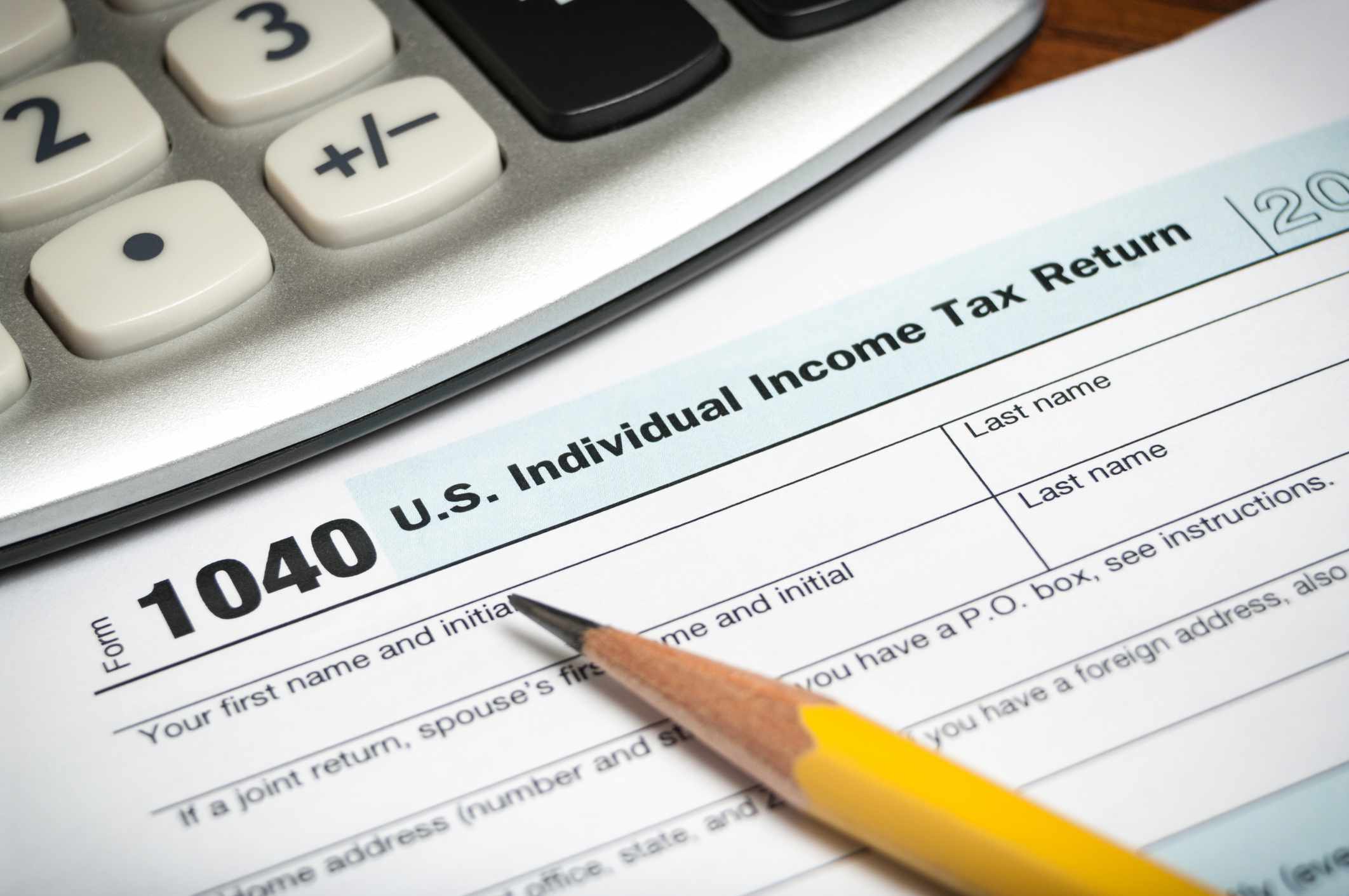

Finance
When Does The Insurance Deductible Reset?
Published: November 12, 2023
Learn when your insurance deductible resets and how it impacts your finances. Stay informed about the timing to optimize your budget and coverage.
(Many of the links in this article redirect to a specific reviewed product. Your purchase of these products through affiliate links helps to generate commission for LiveWell, at no extra cost. Learn more)
Table of Contents
Introduction
When it comes to insurance, understanding the ins and outs of your policy is crucial. One key aspect that often confuses policyholders is the insurance deductible and its reset period. The deductible is the amount you must pay out of pocket before your insurance coverage kicks in to cover the rest of the expenses. But when does this deductible reset? And what factors influence the reset period?
In this article, we will delve into the concept of insurance deductibles and shed light on the different factors that impact when these deductibles reset. Whether you’re dealing with auto insurance, health insurance, or any other type of coverage, having a clear understanding of the deductible reset can help you better navigate your policy and make informed decisions.
So, let’s get started by exploring the fundamentals of insurance deductibles and how they work. By the end of this article, you’ll have a solid grasp on when your insurance deductible resets and what it means for your financial protection.
Understanding Insurance Deductibles
Before diving into the details of when insurance deductibles reset, let’s first understand what deductibles are and how they function. An insurance deductible is the amount of money you are responsible for paying before your insurance company begins to cover the remaining expenses.
Insurance deductibles serve a few key purposes. Firstly, they help to prevent individuals from filing small or frivolous claims for minor expenses. Secondly, deductibles help to keep insurance premiums more affordable by shifting some of the financial burden onto the policyholder. By requiring policyholders to pay a deductible, insurance companies are able to keep their costs down and offer coverage at a reasonable price.
The amount of your insurance deductible is typically specified in your policy and can vary depending on the type of insurance you have. For example, auto insurance deductibles are often set at fixed amounts, like $500 or $1,000. Health insurance deductibles may be stated as a specific dollar amount or a percentage of your overall coverage.
Understanding how your deductible works is crucial to effectively manage your insurance coverage. Knowing when your deductible resets is equally important, as it directly impacts when you will be responsible for paying out of pocket again. Let’s explore the different factors that influence when an insurance deductible resets.
Factors Affecting Deductible Reset
The reset period for an insurance deductible can vary depending on several factors. Understanding these factors can help you determine when your deductible will reset and when you will be responsible for paying it again.
1. Policy Type: Different types of insurance policies may have different deductible reset periods. For example, auto insurance deductibles often reset at the start of each policy term, while health insurance deductibles may reset annually or on the policy anniversary.
2. Insurance Company: Insurance companies may have their own specific rules and regulations regarding deductible resets. It’s important to review your policy or contact your insurance provider to understand their specific guidelines.
3. Policy Terms and Conditions: The terms and conditions of your insurance policy will outline the details of your deductible reset. It’s essential to review these terms to have a clear understanding of when your deductible will reset.
4. Claim History: Your claim history can also impact the reset period for your deductible. If you have filed a claim and your insurance company has covered the expenses, your deductible may reset based on the specific terms stated in your policy.
5. Types of Deductibles: Different types of deductibles may have different reset periods. For example, a per-occurrence deductible may reset for each new occurrence or event, while an aggregate deductible may reset annually.
It’s crucial to review your insurance policy and consult with your insurance provider to understand the specific factors that determine when your deductible resets. By having a clear understanding of these factors, you can plan ahead and be prepared for any out-of-pocket expenses that may arise.
Common Types of Reset Periods
The reset period for an insurance deductible can vary depending on the type of policy you have. Let’s explore some of the common types of reset periods you may encounter.
1. Annual Deductible Reset: In many insurance policies, especially health insurance, the deductible reset period is typically on an annual basis. This means that at the start of each year, your deductible will reset, and you will be responsible for meeting it again before your insurance coverage takes effect.
2. Calendar Year Deductible Reset: Similar to the annual reset, some insurance policies, such as those for flexible spending accounts (FSAs), follow a calendar year deductible reset. This means that your deductible resets at the beginning of each new calendar year.
3. Policy Anniversary Deductible Reset: For certain insurance policies, like homeowner’s insurance or auto insurance, the deductible may reset on the anniversary date of your policy’s start. This means that regardless of the calendar year, your deductible will reset on the specific anniversary date of your policy.
4. Rolling Deductible Reset: In some cases, the deductible reset period is based on a rolling timeframe. This means that the clock starts ticking on your deductible from the date of your first claim or a specific event, and it reset after a certain length of time, usually 12 months.
These are just a few examples of common reset period types for insurance deductibles. It’s essential to carefully review your insurance policy to determine the specific reset period and understand how it may impact your financial obligations.
Remember, the reset period for your insurance deductible can have a significant impact on your financial planning. Being aware of when your deductible resets will help you make informed decisions about when to seek medical treatment or file a claim, ensuring you understand your out-of-pocket costs throughout the policy term.
Annual Deductible Reset
One of the most common types of deductible reset periods is the annual deductible reset. This reset occurs on a yearly basis, typically at the start of each calendar year. Understanding how the annual deductible reset works is crucial for effectively managing your insurance coverage.
With an annual deductible reset, your deductible amount starts fresh at the beginning of each year. This means that any expenses you incur in the previous year will not count towards your deductible for the new year. Instead, you will need to meet the deductible amount again before your insurance coverage kicks in.
For example, let’s say you have a health insurance policy with a $2,000 annual deductible. In the previous year, you had an illness and incurred medical expenses totaling $1,500. Since the deductible resets at the start of the new year, you will need to pay another $2,000 out of pocket before your insurance starts covering your expenses for the current year.
The annual deductible reset can affect various types of insurance policies, including health insurance and some property and casualty insurance policies. It is important to review your policy documents to determine if your insurance policy follows this reset period.
Understanding the annual deductible reset allows you to plan your healthcare expenses accordingly. If you have met your deductible for the current year, you may consider scheduling medical treatments or procedures during that period to take advantage of your insurance coverage. On the other hand, if your deductible resets soon, you may want to hold off on non-urgent medical procedures to avoid paying the full cost out of pocket.
It’s vital to keep track of your deductible progress throughout the year, especially if you have a high deductible. By understanding when your annual deductible resets, you can effectively manage your finances, make informed decisions about medical treatments, and ensure you are maximizing the benefits of your insurance coverage.
Calendar Year Deductible Reset
Another common type of deductible reset period is the calendar year deductible reset. With this type of reset, your deductible resets at the beginning of each new calendar year, regardless of when your policy started. Understanding how the calendar year deductible reset works is essential to properly plan for your out-of-pocket expenses.
For policies that follow a calendar year deductible reset, any expenses you incurred in the previous year will not count towards meeting your deductible for the new year. This means that even if you were close to meeting your deductible in the previous year, you will need to start from zero again when the new calendar year begins.
Let’s say, for instance, you have homeowner’s insurance with a $1,000 deductible, and you experienced water damage in your home in November. The repairs cost you $800, bringing you close to meeting your deductible. However, because the calendar year will reset in January, you will need to pay an additional $1,000 out of pocket before your insurance coverage kicks in for any future claims in the new year.
Calendar year deductible resets commonly apply to various insurance policies, including flexible spending accounts (FSAs) and certain types of health insurance plans. It is crucial to review your policy documentation or consult with your insurance provider to determine if your coverage follows the calendar year deductible reset.
Understanding the calendar year deductible reset allows you to plan your expenses accordingly. If you have already met your deductible for the year, you may want to schedule any necessary medical treatments or make claims before the year ends to take full advantage of your insurance coverage. On the other hand, if your calendar year deductible reset is approaching, you may want to delay non-urgent procedures or expenses to avoid paying the full cost out of pocket.
By staying aware of your deductible status and the calendar year reset, you can effectively manage your finances and make informed decisions about timing your expenses and utilizing your insurance coverage to its maximum potential.
Policy Anniversary Deductible Reset
Policy anniversary deductible reset is a type of reset period that is specific to certain insurance policies, such as homeowner’s insurance or auto insurance. Unlike calendar year or annual resets, the deductible in these policies resets on the anniversary date of your policy’s start.
With a policy anniversary deductible reset, your deductible amount starts fresh on each policy anniversary. This means that any expenses you incurred in the previous policy term will not count towards your deductible for the new term. Instead, you will need to meet the deductible amount again before your insurance coverage comes into effect.
For example, let’s say you have auto insurance with a $500 deductible, and your policy anniversary date is June 1st. In the previous policy term, you were involved in a car accident in January and paid your $500 deductible at that time. When your policy renews on June 1st, you will need to pay the deductible again if you file another claim during that new policy term.
Policy anniversary deductible resets provide a set timeframe for which your deductible will remain in effect. It is important to review your insurance policy or consult with your insurance provider to understand the specific policy anniversary date and when your deductible will reset.
By being aware of the policy anniversary deductible reset, you can plan your expenses accordingly. If you have already met your deductible for the current policy term, you may consider filing any necessary claims before the policy anniversary date to take full advantage of your coverage. On the other hand, if your policy anniversary and deductible reset are approaching, you may want to delay non-urgent claims or expenses until after the reset to minimize your out-of-pocket costs.
Understanding the policy anniversary deductible reset allows you to effectively manage your insurance coverage, make informed decisions about filing claims, and ensure that you are prepared for any deductible-related expenses throughout your policy term.
Rolling Deductible Reset
A rolling deductible reset is a type of deductible reset period that is commonly used in certain insurance policies. Unlike fixed annual or calendar year resets, a rolling deductible reset occurs at a specific interval from a particular event or occurrence.
With a rolling deductible reset, the clock starts ticking on your deductible from the date of a specific event or the first claim you make. After a set period, typically 12 months, your deductible resets, and you will need to meet it again before your insurance coverage applies.
For example, let’s say you have insurance coverage for property damage, and you filed a claim for a previous incident in April of last year. If your policy has a rolling deductible reset, your deductible will reset 12 months from the date of that claim. This means that any subsequent claims or expenses after that reset date would require you to pay the deductible again.
Rolling deductible resets offer flexibility in terms of timing. The timing of the reset is not tied to a specific calendar year or policy anniversary, but rather depends on the duration specified in your policy. It is important to review your insurance policy or consult with your insurance provider to understand the duration of the rolling deductible reset.
Understanding the rolling deductible reset allows you to plan your expenses accordingly. If you have recently met your deductible and have a planned procedure or anticipate any potential claims, it may be advantageous to schedule them before the rolling deductible reset to minimize your out-of-pocket costs. On the other hand, if your rolling deductible reset is approaching, you may want to delay non-urgent claims or expenses until after the reset to take full advantage of your coverage.
By being aware of the rolling deductible reset, you can effectively manage your insurance coverage, make informed decisions about when to file claims, and ensure that you are prepared for any deductible-related expenses within the specified time frame.
Special Cases of Deductible Reset
In addition to the common types of deductible resets, there are some special cases where the reset period may differ or be influenced by specific circumstances. Understanding these special cases can provide clarity on how your deductible may reset under unique circumstances.
1. Catastrophic Events: In the event of a catastrophic event, such as a natural disaster or major accident, some insurance policies may have special provisions regarding deductible resets. In these cases, the deductible may be waived, or alternative arrangements may be made to accommodate the policyholders’ needs.
2. Cumulative Deductibles: Certain insurance policies, particularly in the healthcare sector, may have cumulative deductibles. With cumulative deductibles, your expenses throughout the policy term accumulate towards meeting the deductible. This means that every time you have an eligible expense, it contributes towards reaching your deductible threshold, regardless of reset periods.
3. Split Deductibles: Split deductibles are common in auto insurance policies that cover both collision and comprehensive damage. In such cases, each type of coverage may have its own deductible. The deductibles for these coverages may have separate reset periods, depending on the policy terms.
4. Policy Changes: If you make changes to your insurance policy, such as adjusting coverage or adding/removing endorsements, your deductible reset may be affected. Be sure to review any changes to your policy carefully to understand how they impact your deductible and reset periods.
These special cases emphasize the importance of thoroughly reviewing your insurance policy and understanding the terms and conditions specific to your coverage. Familiarizing yourself with any unique deductible reset provisions or circumstances can significantly impact your financial planning and decision-making.
If you encounter any of these special cases or have questions regarding your deductible reset, it is advisable to consult directly with your insurance provider. They can provide accurate information about how your deductible may reset under these specific circumstances, ensuring you have a clear understanding of your policy coverage and obligations.
Conclusion
Understanding when your insurance deductible resets is essential for effectively managing your insurance coverage and being prepared for out-of-pocket expenses. While the specific reset period can vary depending on factors such as policy type, insurance company, and policy terms, familiarizing yourself with the common types of deductible resets can help you navigate your policy with confidence.
Whether your insurance deductible resets on an annual basis, at the beginning of each calendar year, on your policy anniversary, or through a rolling period, being aware of the reset timeline allows you to plan your expenses accordingly. It enables you to make informed decisions about filing claims, scheduling medical treatments, or handling property damage.
It’s crucial to review your insurance policy documents and consult with your insurance provider to fully understand the details of your deductible reset. This will help you stay informed about your financial responsibilities throughout the policy term and ensure you are maximizing the benefits of your coverage.
Remember, insurance deductibles are put in place to protect both policyholders and insurance companies. Understanding when your deductible resets empowers you to make the most of your insurance coverage while effectively managing your out-of-pocket expenses.
By staying informed about your deductible reset, you can navigate the world of insurance with confidence and peace of mind, knowing when you’ll be responsible for paying your deductible and when your insurance coverage will take effect.














